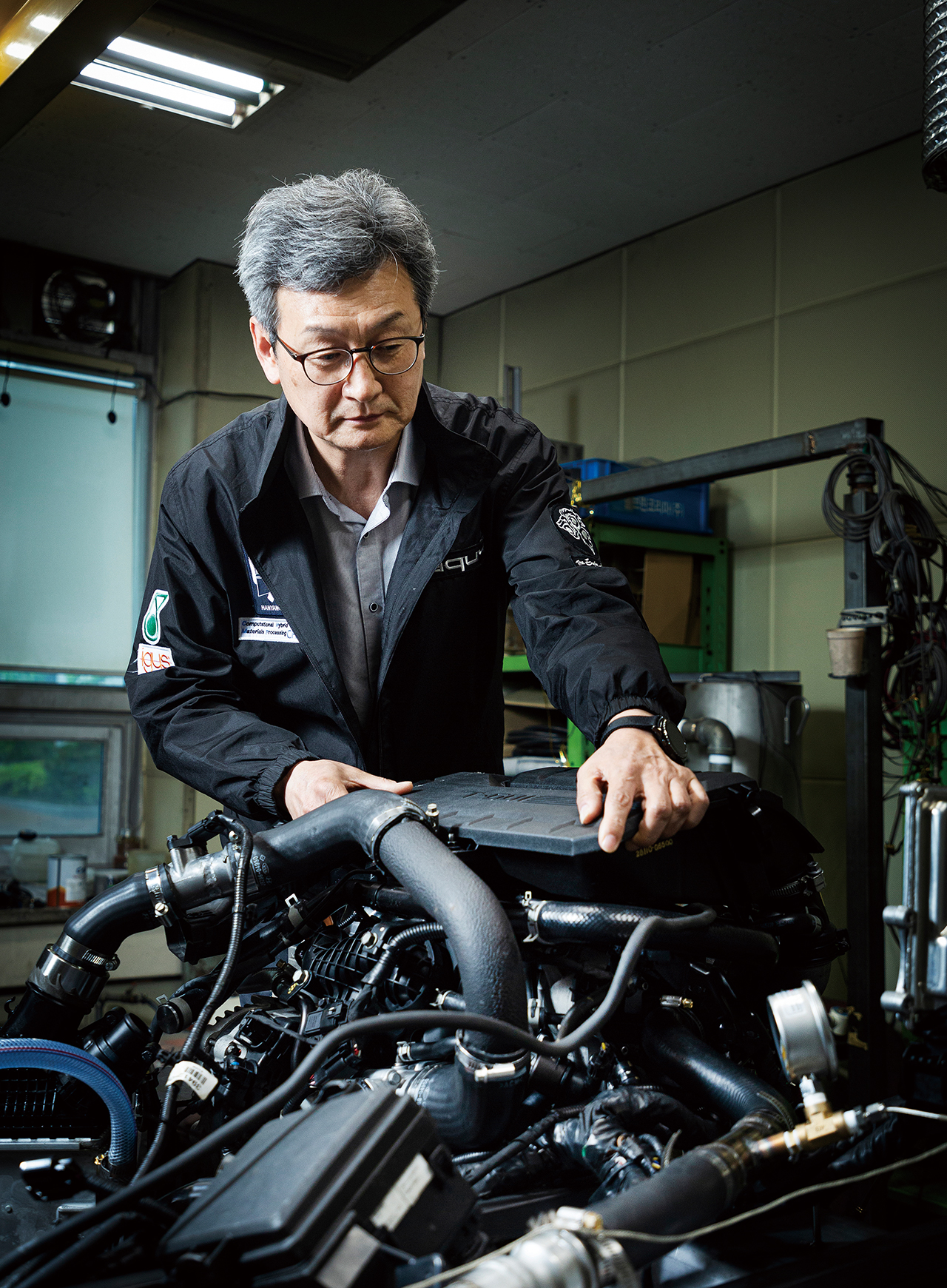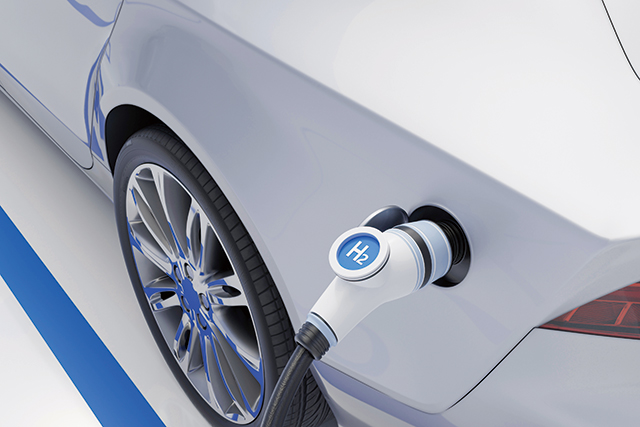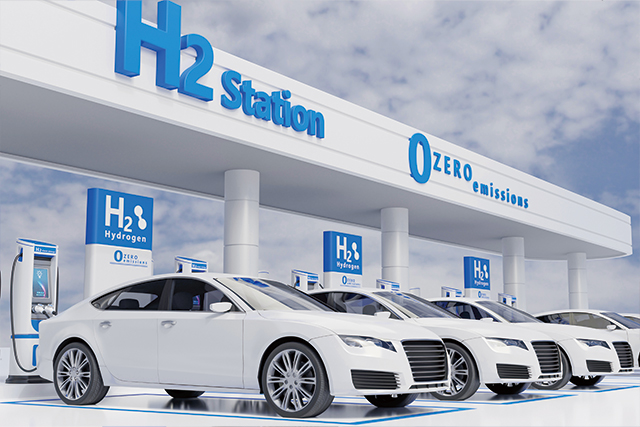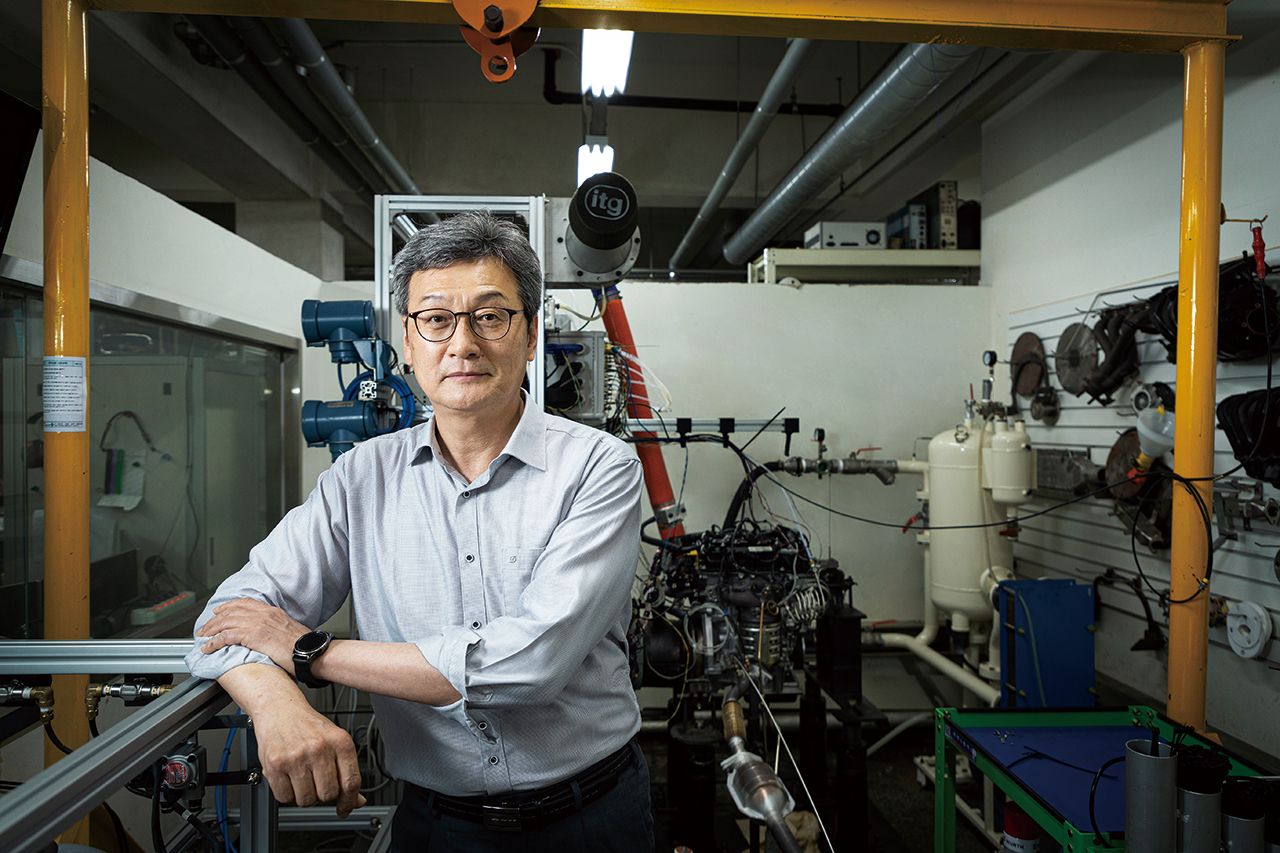Contents VOL. 258

COVER STORY
<HYPER> 여름호는 자율주행 차와 친환경차로 대변되는 이동 수단의 혁명, 모빌리티의 미래를 테마로 다뤘습니다. 이번호 기사를 통해 생각해보세요. 빠르게 발전하는 첨단과학 기술들, 그 변화의 흐름을 따르기만 하면 우리는 과연 멋진 신세 계에 도달할 수 있을까요?

<HYPER> 여름호는 자율주행 차와 친환경차로 대변되는 이동 수단의 혁명, 모빌리티의 미래를 테마로 다뤘습니다. 이번호 기사를 통해 생각해보세요. 빠르게 발전하는 첨단과학 기술들, 그 변화의 흐름을 따르기만 하면 우리는 과연 멋진 신세 계에 도달할 수 있을까요?
Scroll Down
Internal combustion engine cars are facing the biggest crisis in 130 years of history with the rapid transition to a “zero-carbon” society worldwide. Do internal combustion engine cars have to be removed like this? Lee Ki-hyeong, a professor from the Department of Mechanical Engineering at Hanyang University’s ERICA Campus, said that these two different vehicles should coexist until the proportion of renewable energy development reaches 80%.

기계공학과 이기형 교수
Professor Lee Ki-hyeong, Department of Mechanical Engineering
2025년 네덜란드, 노르웨이를 시작으로 2030년 독일, 인도, 이스라엘, 2035년 영국, 서울, 미국 캘리포니아주, 2040년 프랑스, 스페인, 대만, 싱가포르 등이 내연기관 신차의 판매 금지를 선언했다. 많은 국가와 도시들이 온실가스 배출량을 줄이기 위해 강경책을 꺼내든 것이다. 하지만 기계공학과 이기형 교수는 아무리 자동차 시장이 친환경차를 중심으로 재편되는 중이라 해도 2030년 내연기관 자동차의 비중은 여전히 70%에 가까우리라 전망했다.
“70%라는 것은 내연기관 자동차에 하이브리드 자동차 비중까지 포함한 수치입니다. 전기차의 경우 아직은 수익구조가 낮아서 자동차 업체들이 전기차로 100% 전환하기는 쉽지 않은 실정입니다. 전기차는 가격이 비싸 정부 보조금에 대한 의존도가 높고, 충전 시 주행거리 문제와 충전 인프라 부족, 배터리 원료인 희토류의 한정적인 매장량 등 아직 많은 문제를 안고 있습니다. 수소차 또한 당장은 수소충전소 부족 등 보급에 장애 요소가 많습니다.”
친환경 자동차로의 이행이 거스를 수 없는 대세이자, 인류의 과제라는 데는 이견이 없다. 다만 속도 조절이 필요하다는 것이다. 내연기관차의 급격한 퇴출은 산업적으로나 국가적으로나 잃는 것이 더 많을 수 있기 때문이다.
“내연기관차는 전기차보다 부품 수가 30~40% 이상 많아 관련 부품업체나 근로자 수도 많습니다. 그러니 고용 창출과 세수 확보 등 국가 경제에 미치는 영향을 종합적으로 판단해야 합니다. 게다가 우리나라는 자체 기술로 엔진을 제작하고 수출까지 하는 몇 안 되는 국가 중 하나예요. 세계적인 경쟁력을 갖춘 내연기관을 급격하게 퇴출하면 일자리뿐 아니라 수출 감소로 무역수지가 악화할 수 있어요. 또 자동차 관련 업체들은 친환경 자동차 개발에 투자할 수 있는 캐시카우가 줄어들게 됩니다.”
The Netherlands and Norway announced a ban on the sale of new internal combustion engine cars from 2025 followed by Germany, India, Israel from 2030, Britain, Seoul, California, USA from 2035, and France, Spain, Taiwan, Singapore from 2040. Many countries and cities have taken strict measures to reduce greenhouse gas emissions. However, Professor Lee Ki-hyeong from the Department of Mechanical Engineering predicted that the proportion of internal combustion engine cars will still be about 70% in 2030 even if the automobile market is being reorganized to eco-friendly cars.
“70% is the percentage of internal combustion engine cars including hybrid cars. In the case of electric cars, it is not easy for automobile companies to completely switch to electric cars since the profit structure is still low. Electric cars still have a lot of problems such as high dependence on government subsidies due to the expensive price, traveling distance after charging, insufficient charging infrastructure and limited reserves of rare earth elements. Hydrogen cars also face difficulties from a shortage of hydrogen charging stations for the time being.”
Eco-friendly cars are an irresistible trend as well as an assignment for humankind. However, there is a need to adjust the speed of this change. This is because the sudden withdrawal of internal combustion engine cars may cause more industrial and national loss.
“Internal combustion engine cars have more than 30~40% more parts than electric cars, and there are more manufacturers and workers involved. Therefore, the impact on the national economy, such as job creation and securing tax revenues, should be comprehensively judged. In addition, Korea is one of the few countries that manufactures and exports engines using its own technology. If international competitive internal combustion engines are withdrawn rapidly, exports could worsen the trade balance. Then, automobile companies will have reduced cash reserves to invest in developing eco-friendly cars.”

무엇보다 탄소제로 사회를 향한 전환이 본질이라면, 그 큰 그림을 위해서라도 급격한 친환경차로의 이행은 어불성설이다. 현재 CO₂ 규제 법규상 전기차와 수소차의 CO₂ 배출은 0으로 간주된다. 하지만 국가 전체의 탄소제로화를 구현하기 위해서는 출구 단계뿐 아니라 전기와 수소를 발생시키는 입구 단계에서의 CO₂도 고려하지 않으면 안 된다.
“신재생 에너지 비중이 작고 주로 석탄과 가스 발전에 의존하는 우리나라의 경우, 전기와 수소 발생 시 CO₂ 배출이 매우 높은 편입니다. 이런 상황에서 전기차와 수소차의 보급만 늘리면 풍선효과처럼 입구 즉, 전기나 수소를 생산할 때 배출되는 CO₂ 양이 증가해 국가 전체의 CO₂ 배출량은 오히려 증가할 수 있는 거죠.”
따라서 신재생 에너지 발전 비율을 높여서 전기차와 수소차의 전 주기(Life Cycle) 과정상 CO₂ 배출량이 완전히 줄어들 때까지는 화석연료와 재생에너지의 공존이 불가피하다는 결론이다. 한편, 내연기관 자동차도 마냥 손 놓고 버티기만 해서는 안 될 것이다. 심각한 환경문제를 더 이상 좌시할 수 없기에 스스로 대기 오염을 줄일 수 있는 길을 찾아야 한다.
“각국의 정부들이 내연기관 퇴출을 선언하지 않더라도 전 세계적으로 강화되고 있는 연비, 배기가스 규제에 대응하지 못하면 내연기관차는 자연히 도태될 수밖에 없습니다. 따라서 환경문제 해결뿐 아니라 생존을 위해서도 내연기관 자동차의 열효율을 높이는 고효율, 저공해 엔진 기술 연구가 활발히 진행 중입니다.”
이미 2021년 유럽연합(EU)의 연비규제인 95g/㎞ 기준을 만족하는 자동차들이 시판되고 있고, 유럽의 배기규제인 EURO6와 미국의 배기 규제인 SULEV 기준을 충족하는 자동차들이 등장했다. 최근에는 실제 도로주행 모드인 RDE규제가 도입돼 이 규제를 통과하지 못하면 자동차를 시판할 수 없게 됐다. 따라서 가솔린 엔진이면서 열효율이 높은 디젤 엔진의 작동원리를 적용한 초희박 자착화연소 엔진, 48V 전동화로 열효율을 높이는 기술, 냉각수와 배기가스로 버려지는 폐열을 회수하는 시스템, 정밀 제어 후처리 기술, 신연소 기술, 고압분사 기술 등이 개발되고 있다. 이와 같은 기술을 도입하면 가솔린 엔진의 열효율이 50%를 넘게 되므로 가까운 시일 내 시판 차량에 적용할 수 있을 것으로 예상된다.
“최근에는 탄소중립 연료(e-fuel)에 관한 관심도 높아지고 있습니다. 재생에너지를 이용해 물을 분해해 수소를 발생시키고 공기 중의 이산화탄소를 포집해 포집된 탄소와 결합하면 탄화수소 계열의 연료를 만들 수 있습니다. 탄소중립 연료의 장점은 기존 석유계 연료와 유사하면서도 청정한 특성이 있어 현행 자동차의 연료를 대체할 수 있다는 점입니다. 그럼 기존 연료 공급 인프라를 그대로 사용할 수 있죠.”
즉, 전기차와 수소차로의 전환은 많은 부품 회사들의 일자리 감축과 새로운 부품 개발에 막대한 비용이 소요된다. 하지만 탄소중립 연료를 활용하면 기존 자동차 제조산업과 인력을 계속 유지할 수 있다는 장점이 있다.
If the focus is to make a zero-carbon society, the transition to eco-friendly cars should not happen suddenly. Currently, the CO₂ emissions from electric and hydrogen cars are considered zero under CO₂ regulations. However, in order to achieve zero-carbon in the country as a whole, CO₂ should be considered not only at the exit stage but also at the entrance stage of generating electricity and hydrogen.
“Korea has a very small share of renewable energy and relies mainly on coal and gas power generation causing very high CO₂ emissions when generating electricity and hydrogen. In such a situation, if we were to increase the number of electric and hydrogen cars, we will see an increase in the amount of CO₂ emitted when producing electricity or hydrogen, like a balloon effect, causing the overall CO₂ emissions to increase.”
Therefore, fossil fuels and renewable energy will have to coexist until CO₂ emissions are completely reduced in the process of increasing the ratio of renewable energy generation. Meanwhile, internal combustion engine cars should not be ignored and stay around. Serious environmental problems should no longer be ignored and society should find ways to reduce these pollutions.
“Even if the government does not declare the abolition of internal combustion engine cars, they will have to be eliminated naturally if they fail to meet the worldwide strict fuel consumption and exhaust regulations. Therefore, research on high efficiency and low pollution engine technology that solve environmental problems while improving the thermal efficiency of internal combustion engine cars is being conducted.”
Cars that meet the 95g/km fuel consumption standard of European Union (EU) have entered the market and cars that meet the EURO6 exhaust regulation standard and SULEV exhaust regulation standard of the United States of America appeared in 2021. Recently, the RDE regulation, an on road test, has been introduced and automobiles that do not pass the regulations are not allowed to be sold in the market. Hence, ultra-thin magnetic ignition combustion engines with high thermal efficiency, 48V motorization, waste heat recovery system, precision control post-treatment technology, new combustion technology and high pressure injection technology are being developed. If this technology is introduced, the thermal efficiency of gasoline engines will exceed 50 percent, allowing it to be applied to vehicles in the market soon.
“The interest for carbon neutral fuel (e-fuel) is increasing these days. Hydrogen can be produced by decomposing water with renewable energy and capturing carbon dioxide in the air to combine it with captured carbon to make hydrocarbon fuel. The advantage of carbon-neutral fuel is that it is similar to existing oil-based fuel and has clean characteristics, so it could replace current automobile fuels. Then we can use the existing fuel supply infrastructure as it is.”
The conversion to electric and hydrogen cars will reduce jobs and cost a lot of money to develop new parts for many companies. However, using carbon-neutral fuels allows the existing automobile manufacturing industries and human resources to be maintained.


현재는 내연기관차에서 친환경차로 이행하는 과도기적 시기다. 그 결과 기존의 내연기관차에 전기차, 수소차 같은 친환경차, 그리고 이 둘이 결합된 하이브리드차가 공존하고 있다. 언제까지 공존의 시대가 이어질까.
“신재생 에너지의 발전 비율이 80%를 넘을 때까지 당분간 다양한 동력원을 가진 자동차들이 각자의 장점을 살려서 효율을 최대한 향상시키며 공존하는 기간이 계속될 것이라 예상됩니다. 내연기관차의 경우는 가까운 장래에 앞서 언급한 탄소중립 연료가 실용화되고, 수소 인프라가 충분히 갖추어지면 수소를 직접 태우는 수소 엔진도 재조명받게 될 것이므로 예상보다 오래 존속될 가능성도 있습니다.”
우리나라는 이 모든 자동차 기술력에서 세계 최고 수준을 자랑하고 있다. 지난 35년간 자동차 동력원을 연구해온 이기형 교수는 불확실성이 높은 미래 자동차 시장에서 경쟁하기 위해서는 슬기로운 대응이 필요하다고 말한다. 내연기관차, 하이브리드차, 전기차, 수소차 모두를 우리나라의 포트폴리오 관점에서 균형감 있게 육성하는 것이 바람직하다고 강조했다.
“내연기관 퇴출이라는 극단적인 선택을 하지 않더라도 내연기관차가 감소할 수밖에 없다는 것은 자명합니다. 그동안 축적된 내연기관의 우수한 기술력을 최대한 유지하면서, 전 세계를 선도하고 있는 우리나라의 배터리와 수소차 기술을 활용해 자동차 기술 강국다운 친환경 자동차 정책이 강구되기를 바랍니다.”
It is now a transitional time to move from internal combustion engine vehicles to ecofriendly vehicles. As a result, internal combustion engine cars coexist with eco-friendly cars, such as electric cars, hydrogen cars, and hybrid cars that combine the other two types. How long will they need to coexist?
“The two types of cars will coexist until the renewable energy generation ratio exceeds 80 percent. Cars with diverse power sources will continue to take advantage of their strengths and maximize efficiency. For internal combustion engine cars, the aforementioned carbon-neutral fuel will be put into practical use in the near future, and hydrogen engines that burn hydrogen directly will be reviewed when the hydrogen infrastructure is fully established.”
Korea has the best automobile technology in the world. Professor Lee Ki-hyeong, who has been studying the power source of automobiles for the past 25 years, said that we need to respond wisely in order to compete in the future automobile market. He also stressed that it is desirable to nurture all internal combustion engine cars, hybrid cars, electric cars and hydrogen cars with a sense of balance from the perspective of Korea’s portfolio.
“It is obvious that the number of internal combustion engine cars will decrease without a strict ban on these cars. I hope that Korea will take advantage of the world’s leading battery and hydrogen car technology to seek eco-friendly car policies while maintaining the excellent technology of internal combustion engines.”
